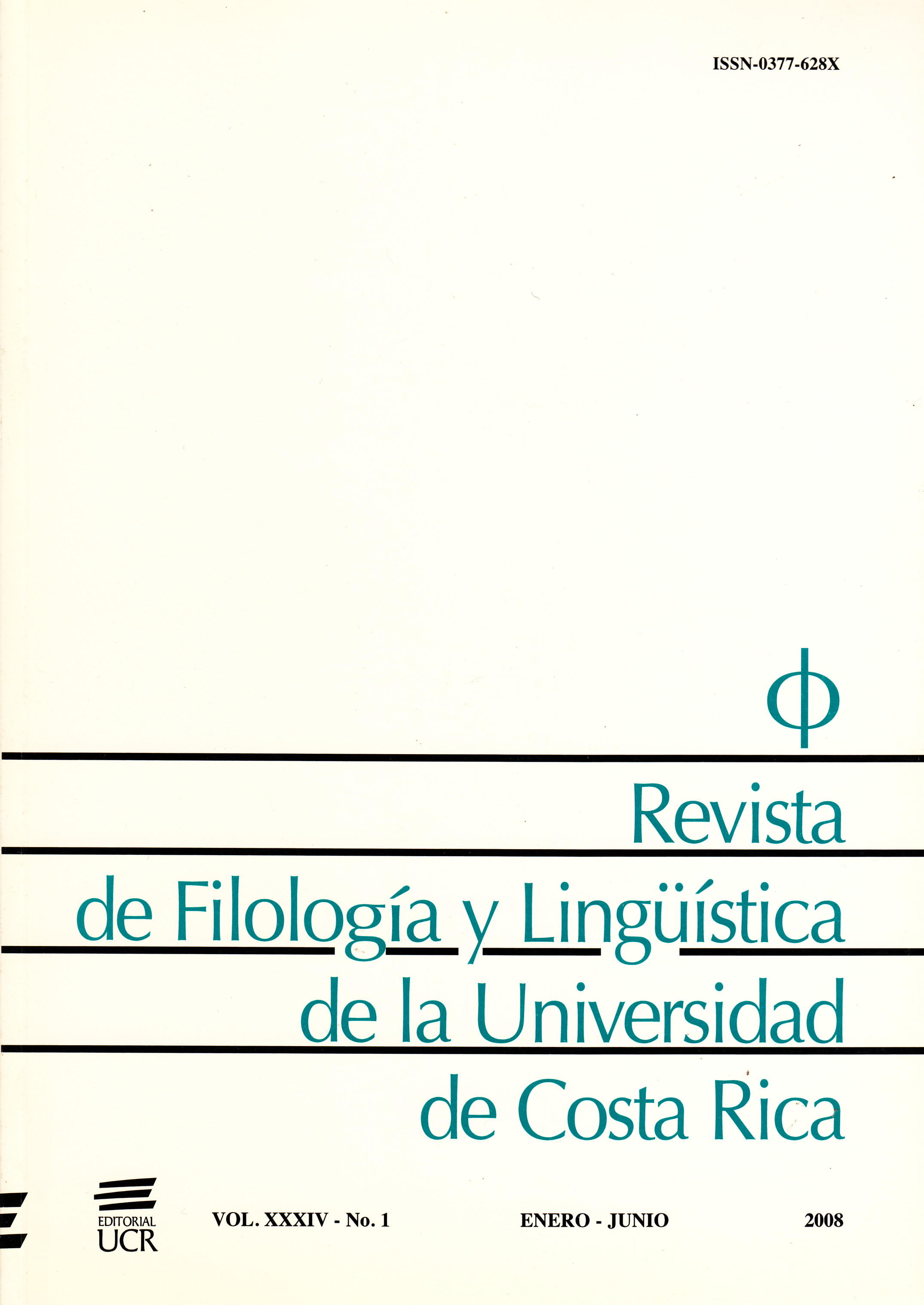Abstract
En los casos en que el alumnado universitario tiene que estudiar una asignatura de su carrera, usando solo libros escritos en una lengua extranjera, el disponer de un nivel aceptable de lectura se convierte en condición fundamental. No obstante, en el presente artículo se plantea que no es suficiente dicho nivel y que el alumnado deberá disponer también de un glosario de términos específicos. Empezamos haciendo un breve resumen de la línea de investigación que se ha interesado por conocer cuáles son los factores que tienen una mayor incidencia a la hora de leer en una segunda extranjera. A continuación presentamos un estudio, llevado a cabo con el alumnado de Oceanografía Física de la Universidad de Las Palmas de Gran Canaria, con el que pretendemos analizar las ventajas del uso de un glosario de términos específicos.Literaturhinweise
Alderson, J.C. y A.H. Urquhart (eds.). 1984. Reading in a foreign language. New York: Longman.
Barnett, M. 1986. “Syntactic and lexical/semantical skill in foreign language reading: importance and interaction”. Modern Language Journal. 70: 343- 349.
Barr, R. et al. 1996. Handbook of reading research. New York: Longman.
Bauer, L. y P. Nation. 1995. “Word families”. International Journal of Lexicography. 6 (4): 253-279.
Bauman, J. y B. Culligan. 1995. General Service List. http://jbauman/gsl.html.
Berman, R. 1984. Syntactic components of the foreign language reading process. En: Alderson y Urquhar (eds.), 139- 156.
Bernhardt, E.B. y M. Kamil. 1995. “Interpreting relationships between L1 and L2 reading: consolidating the linguistic threshold and the linguistic interdependence hypotheses”. Applied Linguistics. 16: 15- 34.
Block, E. 1986. “The comprehension strategies of second language readers”. Tesol Quarterly. 20: 463- 494.
Block, E. 1992. “See how they read: comprehension monitoring of L1 and L2 readers”. Tesol Quarterly. 26: 319- 343.
Carrell, P.L. 1991. “Second language reading: reading ability or language proficiency?” Applied Linguistics. 12: 159- 179.
Clarke, M. 1980. “The short circuit hypothesis of ESL reading or when language competence interferes with reading performance”. Modern Language Journal. 64: 203- 209.
Cooper, M. 1984. “Linguistic competence of practiced and unpractised non-native readers in English”. En: Alderson y Urquhar (eds.), 122- 138.
Cornaire, C. 1999. Le point sur la lecture. París: CLE International.
Coxhead, A. 2000. “A new academic wordlist”. Tesol Quarterly. 34: 213, 238.
Crow, J. y R. Quigley. 1985. “A semantic field approach to passive vocabulary acquisition for reading comprehension”. Tesol Quarterly. 19: 497- 513.
Cummins, J. 1980. “The cross-lingual dimensions of language proficiency: implications for bilingual education and the optimal age issue”. Tesol Quarterly. 14: 175- 187.
Daneman, M. 1996. Individual differences in reading skills. En: Barr et al. (eds.), 512- 538.
Hee Ko, M. 2005. “Glosses, comprehension, and strategy use”. Reading in a Foreign Language. 17: 125- 143.
Hu Hsueh-Chao, M. y P. Nation. 2000. “Unknown vocabularydensity and reading comprehension”. Reading in a Foreign Language. 13: 403- 430.
Huntley, S. y M. Peñate. 2003. “Specific reading at an advanced level: linguistic or strategic competence?”. Ibérica (Revista de la Asociación Europea de Lenguas para Fines específicos). 5: 87- 100.
Rayner, K. y A. Pollatsek. 1989. The Psychology of Reading. Englewood Cliffs, NJ: Prentice Hall.
Rodríguez, A. y M. Peñate. 2008. “La investigación de los procesos lectores: tendencias y enfoques en la lectura general y específica”. Revista de Lenguas para Fines Específicos. 13- 14: 241- 284.
Segalowitz, D. 1991. “Does advanced skill in a second language reduce automaticity in the first language?” Language Learning. 41: 59- 83.
Stanovich, K. 1986. “Matthew effects in reading: some consequences of individual differences in the acquisition of literacy”. Reading Research Quarterly. 21: 360- 407.
Upton, T.A. 1997. “First and second language use in reading comprehension strategies of Japanese ESL students.” Teaching English as a Second or Foreign Language. 3: 1- 24.
Ward, A. 2000. Preparation PET and Practice. Oxford: Oxford University Press.
Ward, J. 1999. “How large a vocabulary do EAP Engineering students need?” Reading in a Foreign Language. 12: 309- 323.
West, M. 1953. A General Service List of English Words. London: Longman.
Williams, R. y D. Dallas. 1984. Aspects of vocabulary in the readability of content area L2 educational textbooks: a case study. En: Alderson y Urquhar (eds.), 199- 212

